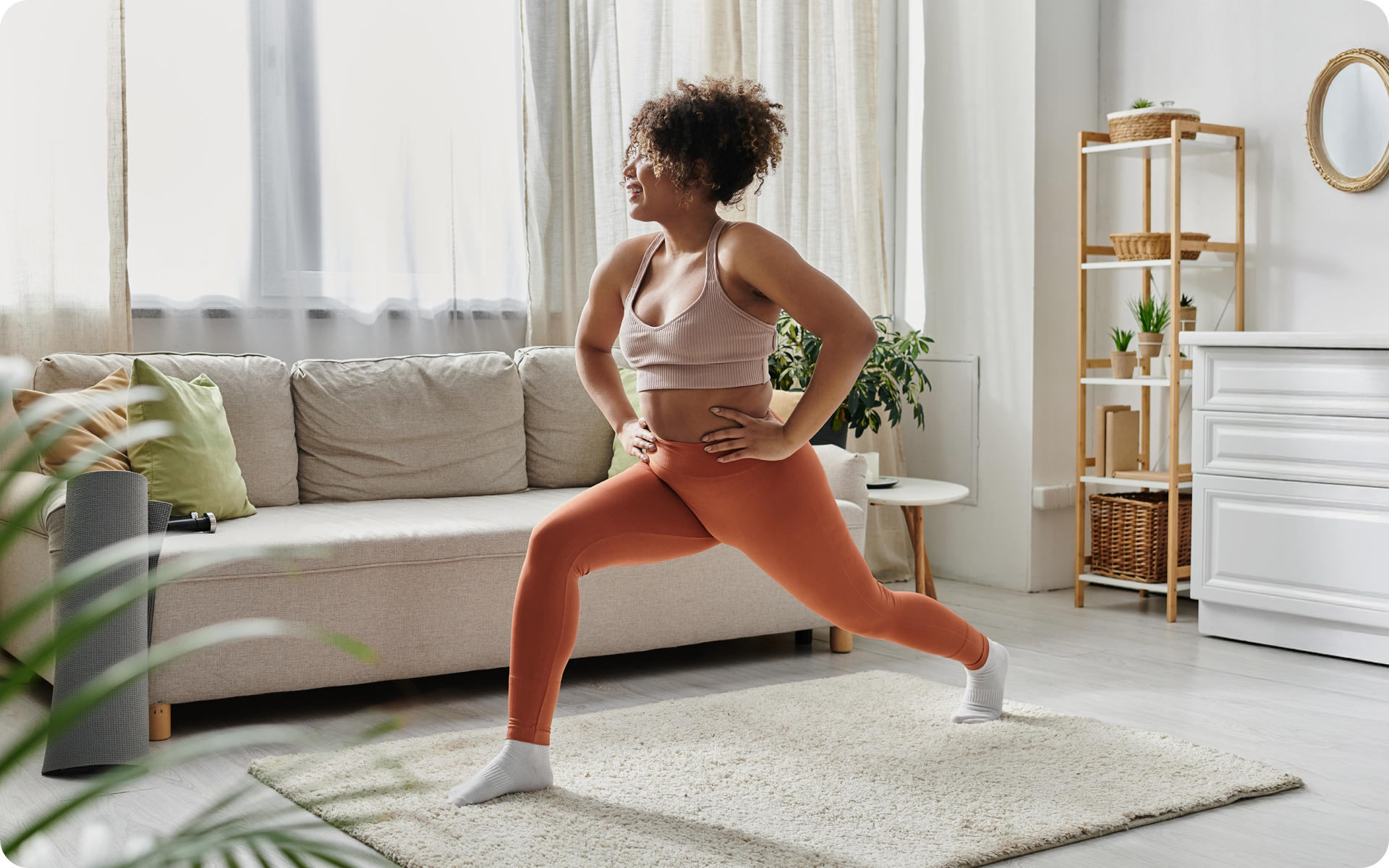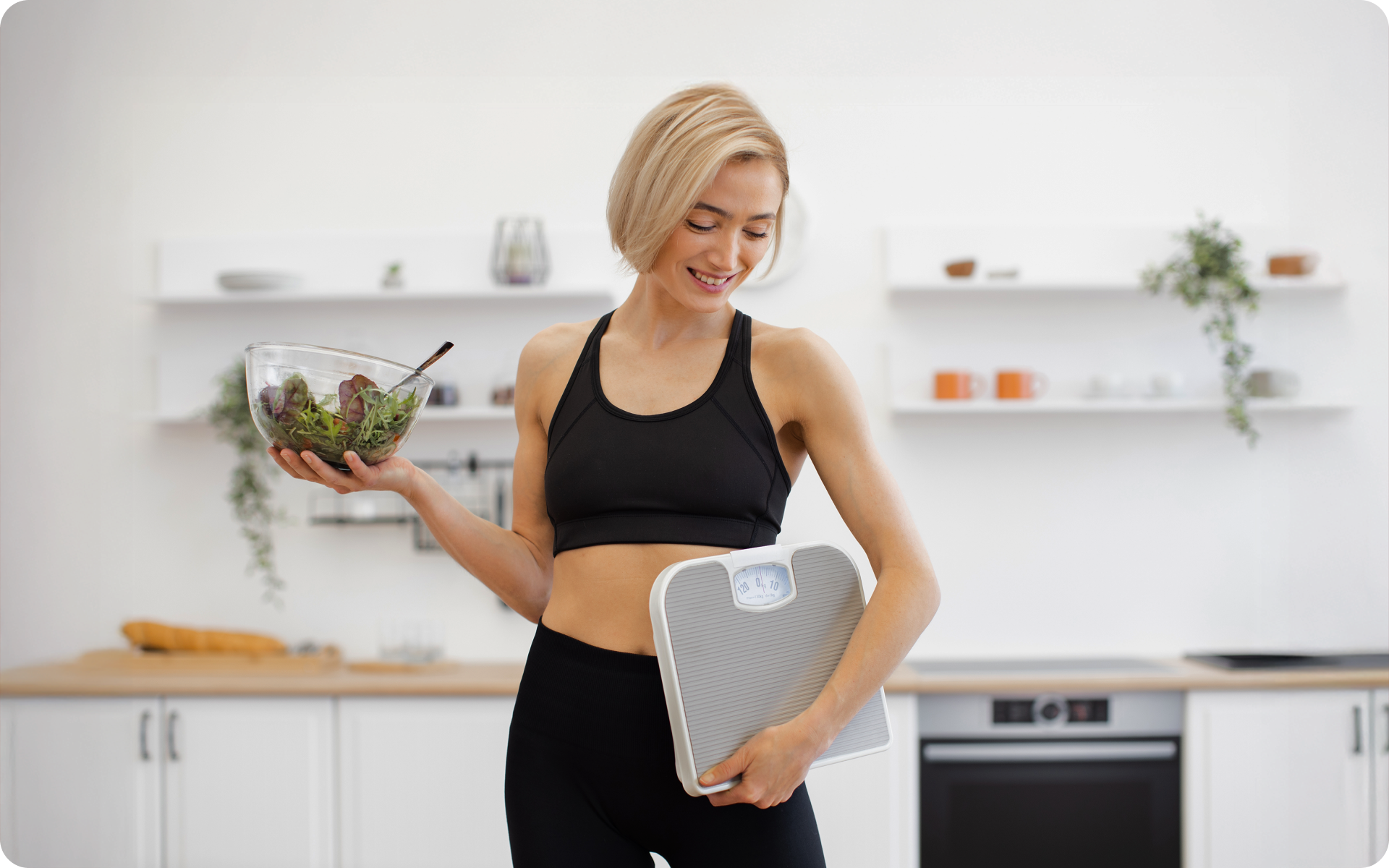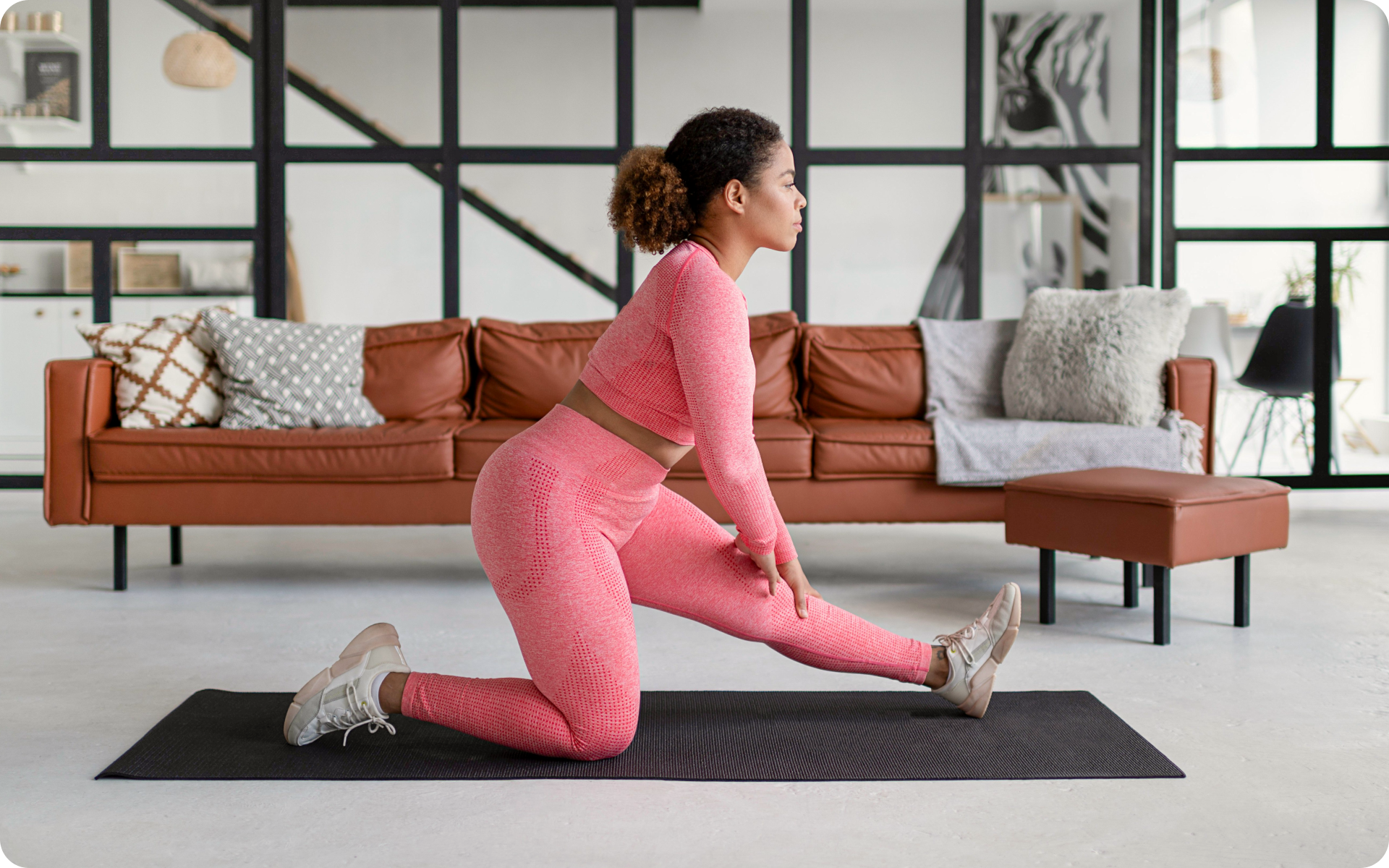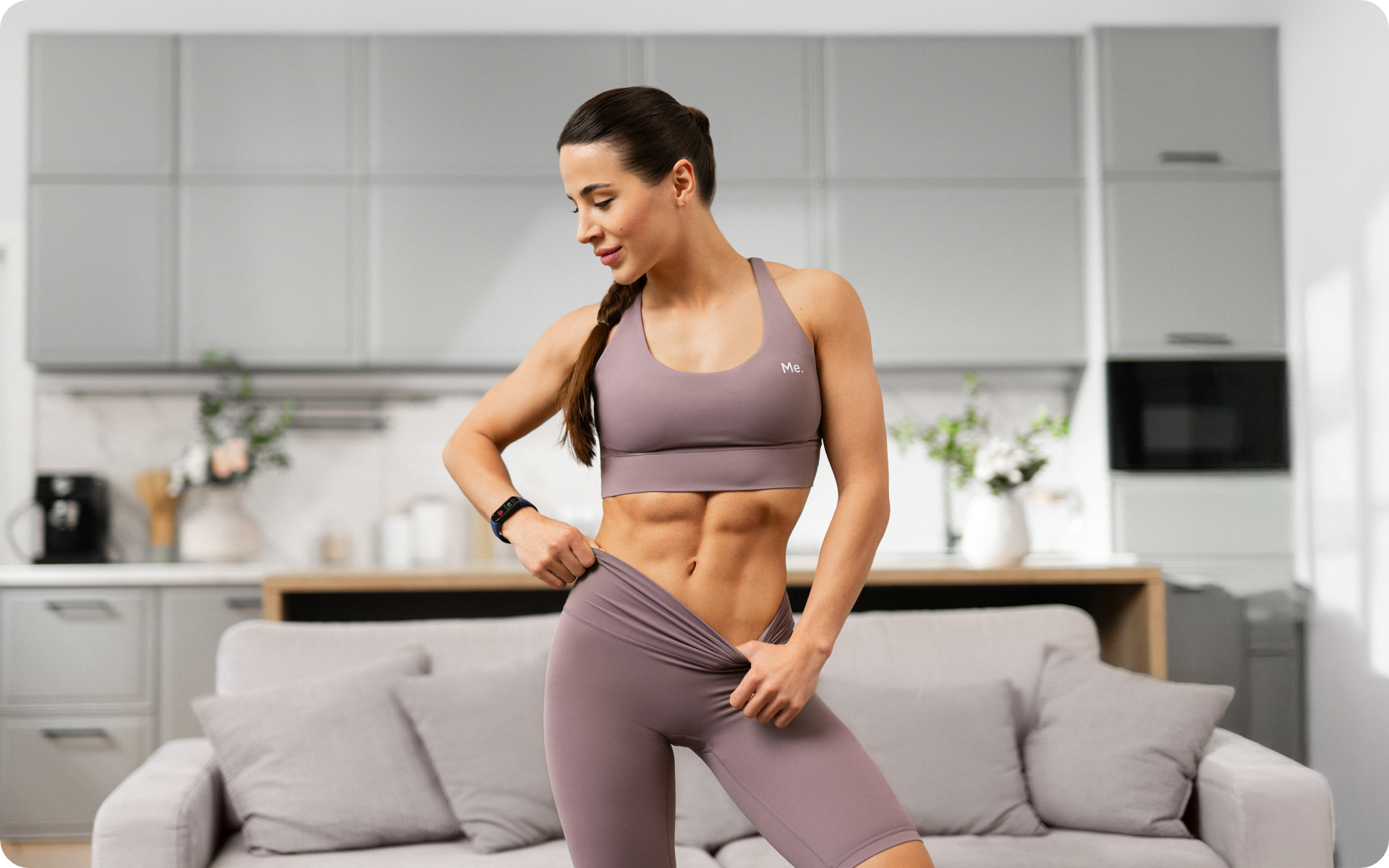The Side Effects of Fast and Significant Weight Loss
A lot of people work incredibly hard to reach their body goals. They spend hours at the gym, follow strict diets, and try to change their lifestyles for the better. When they finally reach their target weight, this isn’t the end. They still need to maintain the result, which can sometimes have unpleasant side effects.
People who lose a significant amount of weight in a short period often notice some loose skin here and there. It’s not the end of the world, but it can be frustrating and annoying. This is why people may be searching for a way to reduce the sagginess of the skin on their bellies or trying to figure out how to tighten the loose skin on their thighs.
If you’ve also encountered this problem, then read on to find out why the skin becomes saggy, how to tighten loose skin on thighs after weight loss using exercise, and how to improve skin elasticity.
Why Does the Skin Become Saggy?
Tight and smooth skin has long been considered a symbol of youthfulness and health, which is why it is understandable that people want to preserve it that way. To be able to do this, or to tighten it after it has become saggy, you need to first figure out what causes the sagginess. Here are the most common causes of loose skin (1):
Aging
One of the most common reasons for loose skin is aging. As you age, the muscles that aren’t involved in the performance of regular physical activity lose their tone, and your skin loses its elasticity. This happens to every part of your body and your thighs are no exception.
It’s a natural process and happens to everyone unless they perform consistent exercise, in addition to specialized exercises to prevent it. In most people, skin laxity, or the process of loosening, occurs between 35 and 45 years (3). It happens because your body lacks collagen networks, elastin fibers, and hyaluronic acid (a molecule that adds to the skin’s ability to retain moisture).
Rapid or significant weight loss
Weight loss is a difficult and long process, but it can be so rewarding. However, it is sometimes accompanied by negative side effects. If you reach your target weight by shedding a significant number of pounds or slimming down too quickly, you may be unsatisfied with the result due to the loose skin on your body (2).
This happens when you burn lots of fat and also when you stop exercising, and results in a loss of lean muscle mass. The state of your skin after weight loss is dependent on your age, genetics, and how long you have been overweight. The longer your skin has been stretched due to excess pounds, the less likely it is that it will simply bounce back to the norm after you’ve slimmed down a couple of sizes (15).
Intense sweat sessions, working weight loss tips, lip-smacking recipes come in one package with the BetterMe app. And all of it is at your fingertips, start transforming your life now!
Here are some other factors that promote loose skin:
- Smoking
- Drinking alcohol
- Skin products or detergents that contain harsh chemicals
- Steroids and corticosteroids
- Artificial tanning
- Ultraviolet light damage
- Menopause
How to Tighten Loose Skin on Thighs
Although various surgical methods can help reduce loose and saggy skin on your thighs, they are quite costly and often leave scars. The good news is that surgical intervention is not the only answer.
Collagen-Boosting Foods
Scientific evidence has highlighted the pivotal role of collagen-boosting foods in promoting skin elasticity. A diet that is rich in essential nutrients such as amino acids, which are prevalent in bone broth, fish, lean meats, and eggs, in addition to phytonutrients that are found in fruits and vegetables, is known to foster the synthesis of collagen—a protein in the body that is responsible for maintaining the firmness of the skin. These foods act as building blocks for collagen production and provide a foundation for combatting thigh skin laxity while enhancing overall skin health. Incorporating these foods into daily meals proactively contributes to the restoration of tightness in the thigh area. (5)
Hydration for Skin Health
The integral connection between hydration and skin elasticity has been a topic of study for several decades. Research has consistently affirmed that adequate water intake is vital for supporting skin health, preventing dehydration-induced sagging, and fortifying overall skin resilience. Sufficient hydration, which is achieved through the consumption of at least eight glasses of water daily, constitutes a fundamental step toward preserving and enhancing thigh skin tightness. Hydration serves as a cornerstone in the maintenance of skin elasticity, presenting a simple yet powerful strategy for individuals who want to address concerns related to loose skin on the thighs. (4)
Topical Retinoids
The efficacy of topical retinoids, derivatives of vitamin A, in refining skin texture and firmness is another recommended way to improve skin elasticity. These compounds play a vital role in stimulating collagen synthesis, thereby contributing to the tightening of loose skin. Incorporating retinoid creams or ointments into a skincare routine, under the guidance of a dermatologist, can harness the regenerative potential of these compounds. (12)
Massage and Skin Stimulations
Engaging in gentle massage techniques increases relaxation and improves blood circulation, which facilitates the delivery of essential nutrients to skin cells. Practices such as dry brushing or using a massage roller can contribute to the gradual improvement of skin firmness. In addition to mere relaxation, these techniques promote the natural processes that tighten loose skin. (7)
Nutritional Supplements
The potential benefits of nutritional supplements, particularly collagen supplements, have been shown to improve skin health. Oral collagen supplementation has exhibited promise in enhancing skin hydration and elasticity. Integrating these supplements into a daily routine, under the guidance of healthcare professionals, can also serve as a proactive approach to addressing concerns relating to loose skin on the thighs. (5)
Adequate Sleep
Another often-dismissed factor for improving skin elasticity is sleep. Inadequate sleep has been associated with accelerated skin aging and compromised skin tightness. Prioritizing 7-9 hours of quality sleep each night supports the natural rejuvenation processes of the skin, which contributes to the overall improvement of thigh skin tightness.
If we look at this from a scientific perspective, sleep is recognized as a fundamental process that influences various physiological processes. By prioritizing sufficient and restorative sleep, you can actively encourage the preservation and enhancement of thigh skin tightness. (6)
Read more: This Stretching Calisthenics Routine Will Have You Loose and Limber for Your Next Workout
Regular Thigh-Targeted Workouts
Regular exercise is the key to sound health and a strong body. But how can you tighten loose skin on your thighs after weight loss with the help of regular workouts? A study found that endurance training may reduce the effect of skin aging in mice and humans. It showed that endurance exercise stimulates the release of the hormone interleukin-15, which may improve tissue metabolism and reduce skin changes (8).
Another way that working out may help you tighten your loose skin is by making you grow lean muscle. Increased muscle mass will visibly reduce the sagginess of your skin, while also giving you a healthier and more youthful look. You can strengthen your inner thighs with hip adduction machines or leg curl and leg extension machines at your gym, or you could try running or Pilates.
If you prefer to work out at home, try incorporating the following exercises into your training routine – perform 2-3 sets, 10-15 reps each. However, you should keep in mind that any adjustments to your workout plan should first be discussed with a specialist. Here are the exercises:
Squats
The squat is one of the most popular exercises that targets the lower body. There is a great variety of squats, with different levels of intensity. The classic squat will help tighten your thighs and buttocks. You can use dumbbells to increase the intensity of your squats and achieve a better result. However, if you’re new to squats, it’s best to try them without weights first.
To perform a classic squat, stand tall with your feet shoulder-width apart and your hands extended in front of you. Get into a squat by bending your knees and lowering your hips, similar to sitting on a chair. Keep your back straight and your knees pointed in the same direction as your toes. Your knees should not cross the invisible vertical line drawn by your toes. Stop when your thighs become parallel to the ground. Slowly return to the initial position by pressing through your feet into the floor and extending at your knees and hips. This is one rep (13).
Front lunge
The lunge is another popular leg exercise. It incorporates the quads, glutes, hamstrings, and many other lower-body muscles. As with a squat, you can increase the intensity of your lunge by using weights.
To perform a proper front lunge, stand with your feet hip-width apart and your hands on your hips. Take a large step forward with your right leg. With your left leg remaining in the initial spot, bend both your knees and slowly lower your body. You should lower your body until your knees are bent at a 90° angle, your right thigh is parallel to the floor, and your left knee almost touches the ground. Return to the standing position by extending your right knee. This is one repetition of a lunge (10). When you perform a set of lunges, you should alternate between legs to avoid muscle imbalances.
Side lunge
This is a variation of a lunge. Stand straight with your intended path to your right. Take a big step outward to the right with your right leg. Bend your right knee and hip and lower your body into what feels like a one-legged squat. Your left leg will remain extended and straight. Return to the original position and repeat with your left leg.
Lateral step-up
For this, you’ll need a stable bench, box, or any other platform. You can also use weights for better results.
To perform a lateral step-up, stand next to your platform with your hands on your hips. Lift your right leg and place it on the platform to your right. Press your foot into the platform as you lift yourself off the ground by extending your right leg, and stand on the platform so it holds your whole weight. Step down, returning to the initial position, and repeat for 8-10 reps before switching legs (9).
Laser Therapy and Radiofrequency Treatments
Advancements in non-invasive cosmetic procedures, which include laser therapy and radiofrequency treatments, are supported by scientific evidence for their efficacy in stimulating collagen production. These innovative technologies deliver controlled heat to the deeper layers of the skin, initiating collagen remodeling and tightening. Seeking guidance from a dermatologist or licensed practitioner will ensure the safe and personalized application of these treatments, providing you with a scientifically-backed option to address loose skin concerns on the thighs. Laser therapy and radiofrequency treatments represent modern interventions that use cutting-edge science to enhance skin tightness.
Whether you’re looking to simply pep up your fitness routine, jazz up your diet with mouth-watering low-calorie recipes or want to get your act together and significantly drop that number on your scale – BetterMe app has got you covered! Improve your body and revamp your life with us!
How to Improve Skin Elasticity
If you feel exercise isn’t for you and you want to find another method for tightening your loose skin, then today’s your lucky day!
The following are some of the ways that may help you fight saggy skin without surgical intervention or exercise, but it’s important to keep in mind that the sole usage of these methods may not be as effective as a combination of all methods, including specific training. Here are some alternative methods for tightening the loose skin on your thighs (1):
Massages
Regular massage performance may improve blood flow and stimulate fibroblasts, cells that promote the production of connective tissues, such as collagen and elastin, that preserve the elasticity and firmness of your skin. Studies have shown that massage may add to the production of mitochondria (11), which plays a significant role in tissue and cellular metabolism. As there is a link between mitochondrial dysfunction and skin aging, regular massage may reduce the aging effect on the skin.
Supplements
You are what you eat. Your diet plays an important role in your skin health. That’s why if you want to improve your skin’s elasticity, one of the most effective ways is to work from the inside. Nutritional supplements may have many various benefits for your skin, including anti-aging and anti-loosening effects. Before you take any supplements, you should consult a health specialist. Here are some supplements that can help you fight sagginess:
Collagen peptides
It’s only natural that if you want to preserve the elasticity of your skin, you should consider taking collagen supplements. A 2015 study found that women who took 10 grams of oral collagen peptides daily experienced improved collagen levels and overall structure of the skin in 4 weeks. At 8 weeks, they noticed better skin hydration levels (14). Collagen peptides in the form of an oral supplement may improve wound healing, collagen and fibroblast production, and the skin’s moisture barrier.
Antioxidants
Antioxidants are also known for their beneficial effect on skin health. They may promote the production of collagen and elastin, which are essential for your skin’s youthful elasticity. Antioxidants and antioxidative enzymes may help you fight loose skin and wrinkles by neutralizing reactive oxygen species (ROS), which are also known as free radicals. These are compounds that can activate pathways that eventually degrade collagen. Most people get enough antioxidants through their diet. Here are the antioxidants you should focus on consuming daily from a combination of foods, drinks, and nutritional supplements:
- Vitamins A, C, D, and E
- Coenzyme Q10
- Epigallocatechin gallate (EGCG)
- Selenium
- Zinc
There is little evidence to suggest that taking antioxidant supplements helps prevent or reduce skin conditions.
Firming products
There are many firming creams, gels, lotions, and other products that are available for treating minor cases of saggy skin. If you want to choose effective firming products, you should look for those that include retinoid compounds. Retinoids are antioxidants that can increase your collagen production. However, even with retinoids, firming products are generally considered ineffective. Experts have claimed that their penetration of the skin is not deep enough and that they offer very subtle results, mostly by acting as a moisturizer (1).
Read more: 6 Amazing Hip Flexor Exercises to Make You Feel Loose and Limber
FAQs
Can you get rid of loose skin on your thighs without surgery?
Yes, you can get rid of loose thigh skin without surgery. It can be achieved through scientifically backed methods. Incorporating a comprehensive approach is key, such as starting collagen-boosting foods and maintaining optimal hydration levels. In addition, a diet that is rich in nutrients, including amino acids found in fish, lean meats, eggs, and vegetables, contributes to the synthesis of collagen, which is essential for maintaining skin firmness. Advanced non-invasive treatments such as laser therapy and radiofrequency procedures also stimulate collagen production, which promotes effective skin tightening. It’s important to note that the amount of loose skin also determines how effective a treatment will be.
Does walking tighten thigh skin?
While walking is beneficial for overall health, a targeted approach is essential for tightening your thigh skin. Engaging in a resistance training program or starting exercise routines such as Wall Pilates or HIIT workouts can target the thigh area. Scientifically, studies have shown that targeted exercises are essential for comprehensive skin tightening. Non-surgical methods, including collagen-boosting foods and hydration, complement exercise routines for holistic thigh skin tightening.
How many years does it take for loose skin to tighten?
The timeframe for tightening loose varies due to factors such as age and genetics. Collagen production and remodeling, which are essential for skin tightening, occur over several months and can vary from person to person. Incorporating a comprehensive approach with proper nutrition, hydration, exercise, sleep, and other non-surgical interventions may take time to see noticeable improvement, which emphasizes the need for patience and consistency.
Does massage help tighten loose skin?
Massage is recognized as a supportive measure for tightening loose skin. It has been scientifically proven that massage contributes to improved blood circulation, and facilitates nutrient delivery to skin cells. Incorporating massage techniques such as using a massage roller, in combination with targeted exercises from a workout for the lower body, promotes collagen production and helps with the overall improvement of skin texture. Regular and targeted massage, together with a holistic approach, offers a non-invasive strategy for improving thigh skin tightness.
The Bottom Line
Losing a significant amount of weight can be relieving and even lifesaving, but after slimming down, some people feel frustrated and dissatisfied. This is due to the saggy skin that occurs as a result of the weight loss.
This article has provided tips on how to tighten loose skin on the thighs.
Saggy skin may be caused by aging and significant or rapid weight loss. If you want to get rid of loose thigh skin, you should include exercises that focus on your thighs in your workout routine. There are also other methods of fighting skin sagginess, including massages, supplements, and firming products, but they might not be as effective as you expect, particularly if used separately.
It’s important to bear in mind that you should consult a doctor before you make any changes to your diet or workout routine.
DISCLAIMER:
This article is intended for general informational purposes only and does not serve to address individual circumstances. It is not a substitute for professional advice or help and should not be relied on for making any kind of decision-making. Any action taken as a direct or indirect result of the information in this article is entirely at your own risk and is your sole responsibility.
BetterMe, its content staff, and its medical advisors accept no responsibility for inaccuracies, errors, misstatements, inconsistencies, or omissions and specifically disclaim any liability, loss or risk, personal, professional or otherwise, which may be incurred as a consequence, directly or indirectly, of the use and/or application of any content.
You should always seek the advice of your physician or other qualified health provider with any questions you may have regarding a medical condition or your specific situation. Never disregard professional medical advice or delay seeking it because of BetterMe content. If you suspect or think you may have a medical emergency, call your doctor.
SOURCES:
- 6 ways to tighten loose skin (2019, medicalnewstoday.com)
- After Huge Weight Loss, Sagging Skin Remains (2014, nbcnews.com)
- Body Contouring and Skin Tightening Using a Unique Novel Multisource Radiofrequency Energy Delivery Method (2017, ncbi.nlm.nih.gov)
- Dietary water affects human skin hydration and biomechanics (2015, ncbi.nlm.nih.gov)
- Collagen Supplements for Aging and Wrinkles (2022, ncbi.nlm.nih.gov)
- Does poor sleep quality affect skin ageing? ( 2015, pubmed.ncbi.nlm.nih.gov)
- Determining the Benefits of Massage Mechanisms (2017, sciencepublishinggroup.com)
- Exercise-stimulated interleukin-15 is controlled by AMPK and regulates skin metabolism and aging (2015, onlinelibrary.wiley.com)
- Lateral Step-up (n.d., exrx.net)
- Lunge (n.d., exrx.net)
- Massage therapy attenuates inflammatory signaling after exercise-induced muscle damage (2012, pubmed.ncbi.nlm.nih.gov)
- Skin Elasticity: 13 Ways to Improve It (2019, healthline.com)
- Squat (n.d., exrx.net)
- The effect of oral collagen peptide supplementation on skin moisture and the dermal collagen network: evidence from an ex vivo model and randomized, placebo-controlled clinical trials (2015, pubmed.ncbi.nlm.nih.gov)
- You Lost the Weight. What About That Extra Skin? (2015, webmd.com)










